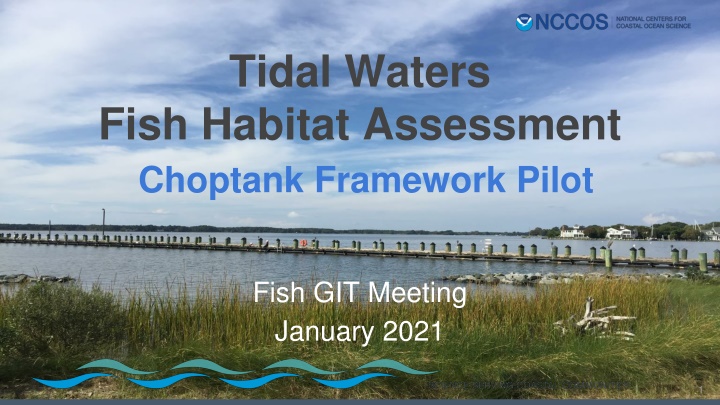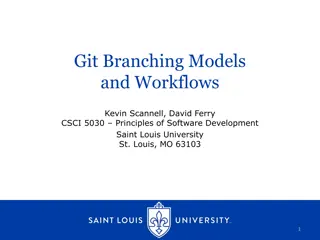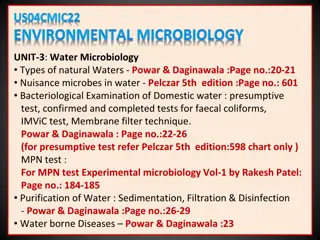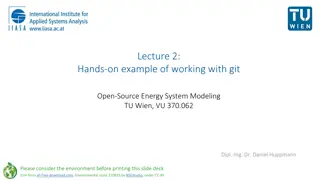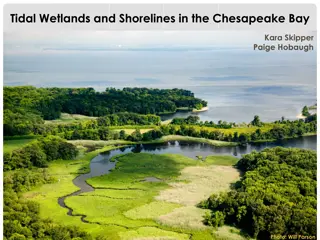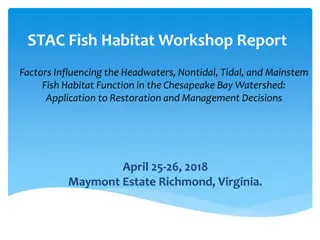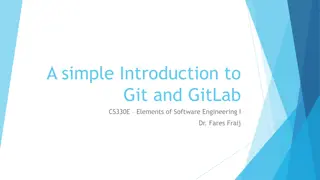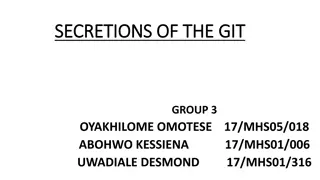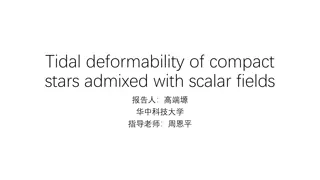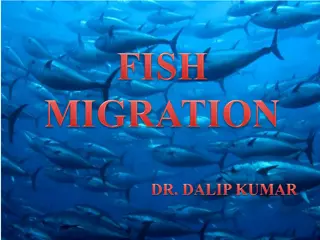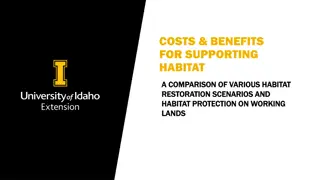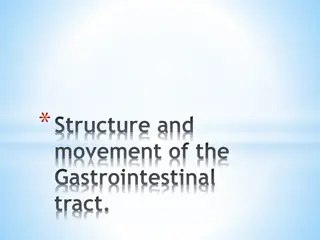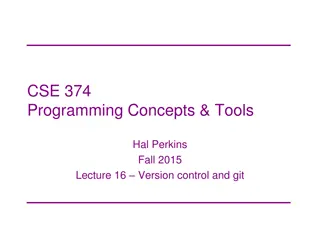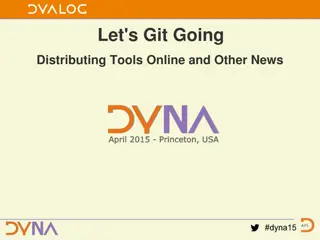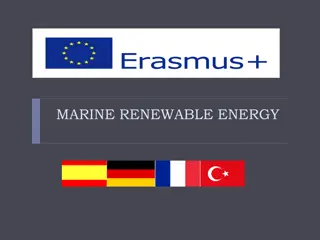Tidal Waters Fish Habitat Assessment Choptank Framework Pilot Fish GIT Meeting January 2021
The Tidal Waters Fish Habitat Assessment Choptank Framework Pilot Fish GIT Meeting held in January 2021 discussed background, drivers, and the selection of the Choptank River as a candidate tributary. The project team, responsible parties, actions, and timeline for developing an analytical framework for habitat assessment were outlined. The engagement of various teams and community efforts in this habitat assessment project were highlighted.
Download Presentation

Please find below an Image/Link to download the presentation.
The content on the website is provided AS IS for your information and personal use only. It may not be sold, licensed, or shared on other websites without obtaining consent from the author.If you encounter any issues during the download, it is possible that the publisher has removed the file from their server.
You are allowed to download the files provided on this website for personal or commercial use, subject to the condition that they are used lawfully. All files are the property of their respective owners.
The content on the website is provided AS IS for your information and personal use only. It may not be sold, licensed, or shared on other websites without obtaining consent from the author.
E N D
Presentation Transcript
Tidal Waters Fish Habitat Assessment Choptank Framework Pilot Fish GIT Meeting January 2021 1
Background and Drivers 2014 Chesapeake Bay Agreement - 6 Goals and 31 Outcomes Fish Habitat Outcome - integration of new information and conducting habitat assessments Previous and Concurrent Assessments Previous assessments limited in data inclusion and spatial scale Coordinating with current regional and national efforts (e.g. ACFHP, NRHA) 2018 Science and Technical Advisory Committee (STAC) Workshop Underscored need for fish [habitat] assessments in both tidal and nontidal waters Assessment team - NOAA, USGS, Fish Habitat Coordinator, others NCCOS team - pilot tidal assessment USGS team - pilot nontidal assessment 3
Background and Drivers Fish Habitat Outcome - 2020-2021 Logic and Action Plan ACTIONS - 2020-2021 Responsible Party (or Parties) Geographic Location Expected Timeline Action # Description Performance Target(s) NOAA/NCCOS April 2020 2.3 Build analytical (statistical) framework for candidate tidal tributary using physical and biological datasets. Using small set of variables, develop an analytical, statistical framework for a candidate tributary (April). Tidal waters of candidate tributary (TBD) 4
Choptank Pilot Project Team Team Members Affiliation/Contact A.K. Leight Suzanne Skelley (Branch Chief) NOAA/National Centers for Coastal Ocean Science/ Cooperative Oxford Lab Oxford, MD 443-786-8417 John Christensen (Branch Chief) Dan Dorfman Chris Jeffrey NOAA/National Centers for Coastal Ocean Science/ Biogeography Branch Silver Spring, MD David Bruce NMFS/ Office of Habitat Conservation/ NOAA Chesapeake Bay Office 5
Selection of Choptank River as Candidate Tributary Choptank River selected because of the extensive research and restoration work already being done Habitat Focus Area - designation under the NOAA Habitat Blueprint Program Extensive oyster restoration Watershed with continued land development and population growth Existing data collection An engaged community - Envision the Choptank 6
Framework Concept Both a structure and a set of organizing principles. Successfully developed and applied in other studies. 8
Chesapeake Tidal Framework Design Structure: 2D hexagonal grid - 2000m2area Extent: Developed for entire Chesapeake Bay tidal waters + 5km buffer Provides permanent address for cell locations Allows for future changes to extent and for addition of new data 9
Background and Next Steps ACTIONS - 2020-2021 Responsible Party (or Parties) Geographic Location Expected Timeline Action # Description Performance Target(s) NOAA/NCCOS July 2020 2.3 (Cont d) Review the analytical statistical framework regional experts. Obtain feedback on the tidal framework from regional experts and incorporate feedback in final version of analytical (statistical) framework to Chesapeake Bay tidal areas. Tidal waters of candidate tributary (TBD) NOAA/NCCOS Fish GIT December 2020 Testing of analytical framework for select tributary(s) informs development of recommendations for extending framework. Tidal waters of candidate tributary (TBD) 10
Expert Panel Workshops 11
Two virtual workshops held in Oct 2020 24 Participants State Gov t Potomac River Fisheries Commission Federal Gov t Universities and NGO s Feedback sought on Design Data Types Data Integration Potential Application 12
Examples of Expert Feedback What s the Question - the intended framework application should drive data decisions Modeled Data Should be Used Carefully and Can Be Improved Model skill must be established via empirical validation Call for continued investment in modeling Offers means of spatial and temporal uniformity of variables in 3D Time Periods Are Important Intra-annual and Inter-annual Patterns Climate Changes How Does this Framework Approach Relate to Other Efforts 13
Next Steps Fish Habitat Outcome - 2020-2021 Logic and Action Plan ACTIONS - 2020-2021 Responsible Party (or Parties) Geographic Location Expected Timeline Action # Description Performance Target(s) NOAA/NCCOS January 2021 2.4 Recommendation report distributed to the Fisheries GIT, Fish Habitat Action Team, and other stakeholders. Develop recommendations for extending the tidal analytical/statistical framework from candidate tributary to Chesapeake Bay tidal areas. Tidal waters of Bay 14
Next Steps Fish Habitat Outcome - 2020-2021 Logic and Action Plan ACTIONS - 2020-2021 Responsible Party (or Parties) Geographic Location Expected Timeline Action # Description Performance Target(s) USGS, NOAA/NCCOS, NOAA/NCBO October 2021 2.7 Options to identify means of achieving better understanding of habitat, stressor and species relationships from headwaters to estuary. Build on non-tidal and tidal analytical and assessment work to identify options for joint NOAA-USGS pilot with non-tidal and tidal habitats. Chesapeake Bay Watershed 15
Supporting Activities Survey of Biological Data for Tidal Waters Conducted by Tetra Tech Metadata report presented to CB Trust and FHAT in July 2020 Coordination with USGS Team Information sharing USGS participation in expert workshops Collaboration on Eel Assessment DC Fisheries Office Coordination with Regional Assessments Northeast Regional Assessment - inshore assessment Data usage and analysis coordination 16
Resource Links The links below lead to full content referenced in this presentation: 1. Tetra Tech Report on Biological Data in Chesapeake Bay Tidal Waters 2. Choptank River Habitat Focus Area Storymap 3. Tred Avon Ecological Assessment Storymap 4. Choptank Digital Atlas 5. Envision the Choptank 17
